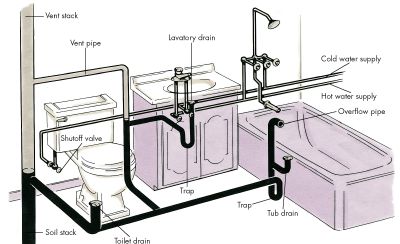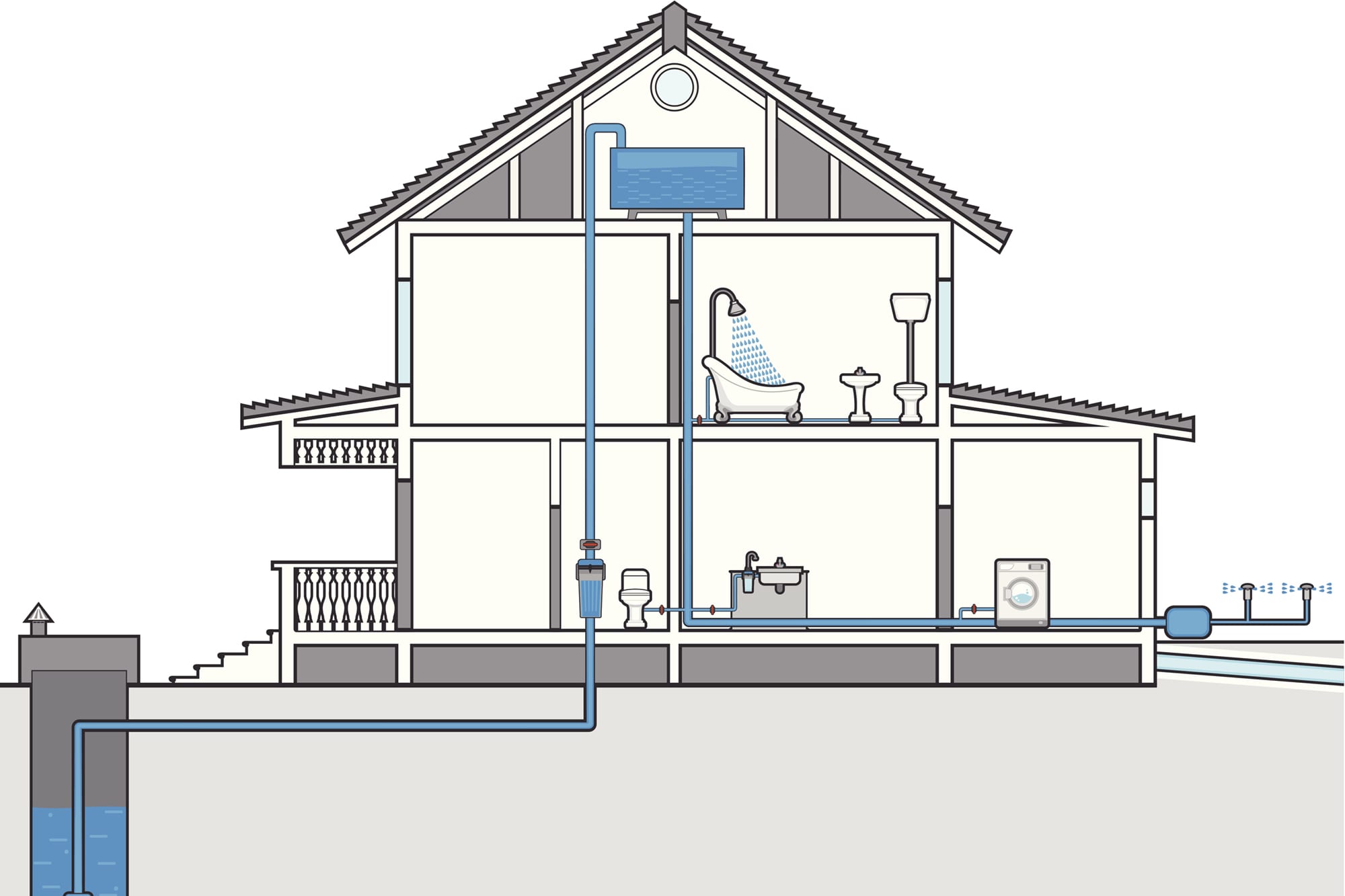We've uncovered the article about Plumbing Installation 101: All You Need to Know directly below on the internet and felt it made good sense to talk about it with you in this article.

Comprehending exactly how your home's pipes system works is important for each homeowner. From providing tidy water for alcohol consumption, cooking, and showering to safely getting rid of wastewater, a properly maintained plumbing system is vital for your family members's wellness and convenience. In this thorough overview, we'll check out the elaborate network that makes up your home's pipes and offer pointers on maintenance, upgrades, and handling typical problems.
Intro
Your home's plumbing system is greater than simply a network of pipelines; it's an intricate system that ensures you have access to tidy water and effective wastewater elimination. Understanding its components and how they interact can help you stop costly fixings and guarantee everything runs smoothly.
Standard Parts of a Plumbing System
Pipes and Tubes
At the heart of your pipes system are the pipelines and tubing that carry water throughout your home. These can be constructed from various products such as copper, PVC, or PEX, each with its advantages in regards to longevity and cost-effectiveness.
Fixtures: Sinks, Toilets, Showers, etc.
Fixtures like sinks, commodes, showers, and bath tubs are where water is made use of in your house. Understanding exactly how these fixtures connect to the pipes system aids in detecting troubles and intending upgrades.
Shutoffs and Shut-off Points
Valves control the flow of water in your plumbing system. Shut-off valves are essential during emergencies or when you require to make fixings, allowing you to isolate parts of the system without interfering with water circulation to the whole home.
Supply Of Water System
Main Water Line
The main water line connects your home to the metropolitan supply of water or a personal well. It's where water enters your home and is distributed to various components.
Water Meter and Stress Regulator
The water meter measures your water use, while a stress regulator ensures that water moves at a risk-free stress throughout your home's plumbing system, preventing damages to pipelines and fixtures.
Cold Water vs. Warm water Lines
Comprehending the distinction between cold water lines, which provide water directly from the main, and warm water lines, which bring warmed water from the hot water heater, assists in troubleshooting and preparing for upgrades.
Drain System
Drain Piping and Traps
Drain pipes carry wastewater far from sinks, showers, and bathrooms to the sewer or septic system. Traps prevent drain gases from entering your home and also catch debris that could create blockages.
Air flow Pipes
Air flow pipes permit air right into the drainage system, protecting against suction that might reduce drain and create traps to vacant. Proper air flow is essential for keeping the integrity of your pipes system.
Importance of Appropriate Drain
Ensuring correct drain prevents backups and water damages. On a regular basis cleaning drains pipes and keeping traps can protect against costly repair services and extend the life of your plumbing system.
Water Furnace
Types of Hot Water Heater
Hot water heater can be tankless or traditional tank-style. Tankless heating units warmth water on demand, while storage tanks store warmed water for prompt use.
Upgrading Your Pipes System
Factors for Upgrading
Updating to water-efficient components or replacing old pipes can enhance water top quality, reduce water expenses, and raise the value of your home.
Modern Plumbing Technologies and Their Advantages
Discover technologies like smart leak detectors, water-saving bathrooms, and energy-efficient hot water heater that can save money and minimize ecological influence.
Cost Considerations and ROI
Determine the ahead of time costs versus long-term cost savings when thinking about pipes upgrades. Several upgrades spend for themselves via decreased energy expenses and less fixings.
Just How Water Heaters Attach to the Pipes System
Recognizing exactly how water heaters link to both the cold water supply and hot water distribution lines assists in identifying problems like not enough warm water or leakages.
Upkeep Tips for Water Heaters
On a regular basis purging your hot water heater to get rid of debris, examining the temperature level setups, and evaluating for leakages can prolong its life expectancy and enhance energy performance.
Usual Pipes Problems
Leaks and Their Causes
Leakages can take place as a result of maturing pipelines, loose fittings, or high water pressure. Addressing leakages immediately protects against water damages and mold and mildew growth.
Clogs and Blockages
Obstructions in drains pipes and bathrooms are typically caused by purging non-flushable products or an accumulation of grease and hair. Making use of drain screens and bearing in mind what drops your drains can avoid clogs.
Indicators of Plumbing Problems to Look For
Low water stress, sluggish drains, foul odors, or abnormally high water expenses are signs of possible pipes issues that should be resolved immediately.
Plumbing Upkeep Tips
Routine Evaluations and Checks
Schedule yearly pipes assessments to catch concerns early. Search for signs of leakages, rust, or mineral buildup in taps and showerheads.
DIY Upkeep Tasks
Easy jobs like cleaning tap aerators, looking for toilet leakages using color tablet computers, or protecting exposed pipelines in cold environments can prevent significant plumbing problems.
When to Call a Professional Plumbing Technician
Know when a plumbing concern requires specialist knowledge. Trying complicated fixings without proper knowledge can cause even more damage and greater fixing expenses.
Tips for Lowering Water Usage
Straightforward habits like taking care of leakages quickly, taking much shorter showers, and running complete loads of laundry and dishes can save water and reduced your energy expenses.
Eco-Friendly Pipes Options
Take into consideration sustainable plumbing materials like bamboo for flooring, which is durable and environment-friendly, or recycled glass for countertops.
Emergency Preparedness
Actions to Take Throughout a Plumbing Emergency
Know where your shut-off shutoffs lie and just how to turn off the supply of water in case of a ruptured pipeline or significant leakage.
Relevance of Having Emergency Contacts Useful
Keep get in touch with details for regional plumbing professionals or emergency situation solutions conveniently offered for quick response during a pipes crisis.
Environmental Impact and Conservation
Water-Saving Fixtures and Appliances
Setting up low-flow faucets, showerheads, and commodes can significantly decrease water usage without sacrificing performance.
DIY Emergency Fixes (When Appropriate).
Short-lived solutions like making use of air duct tape to spot a dripping pipeline or putting a container under a trickling tap can decrease damages up until an expert plumbing technician shows up.
Final thought.
Recognizing the composition of your home's plumbing system empowers you to maintain it effectively, conserving money and time on repair services. By adhering to normal upkeep routines and staying educated concerning contemporary plumbing innovations, you can ensure your pipes system runs effectively for many years to come.
Anatomy of a House: Understanding the Components of your Home (Part 2/3)
Windows/Doors
Windows are pretty simple. They will lean into the frame of your house and have trim/caulk added on both sides of the wall for aesthetics and protection from rain. As of today, the building standard is a vinyl, double hung window. If you look at any window in your house, you ll probably see two main sections of glass, one top section and one bottom section. Those are each called a sash. If they can both move and slide up and down, you have a double hung. Most newer, vinyl windows also have two glass panes in each sash with gas between them for energy efficiency.
The oldest type of window you would see on a typical basis would be the wooden window (everything but the glass is wood). Not long after, metal and aluminum windows became typical. It was perhaps around the early 2000s that vinyl started to become the growing standard. The most typical advantages to updated windows would be a lower energy bill, aesthetics, and function (old windows may stick or have cracked panes, etc).
Moving past the basics, the main pro tip we have is to keep an eye on windows for a subtle leak around the outside allowing rainwater past the siding. This will rot out and damage the frame of your house and wherever else the water gets to. Windows should have a nice caulked-in seal around the outside after the trim is wrapped around the window. If the drywall looks unusual under the window, this could be a sign of water getting in.
Doors are even more simple! However, there is common problem with exterior doors that doesn t seem to go away. When doors don t have an awning or at least an eve extended a little past the exterior wall, it is inevitable that the bottom outside wood of the door frame will rot. There are some door trim materials that are resistant to water damage, but time is not in their favor. All exterior doors are best to have some sort of rain cover.
Plumbing
Plumbing is known for being sneaky! Hidden in the walls and floor joists, it s hard to know there s a problem until visible damage has been done.
There are two systems in your plumbing: supply and drain.
Supply Lines
Supply plumbing comes from the city. In Davidson County of Tennessee, most water meters are in the ground of the front yard near the street. This is your main water valve and each 90 degrees of rotation on the valve will alternate between on and off. The primary differential of supply plumbing is that it is pressurized to push water out of your faucets. Thus, the pipe materials used must be strong and a sprung leak would mean a lot of damage to surrounding parts of the house very quickly. The supply plumbing also has two systems: hot and cold. Some of the water from the main line goes straight to your water heater, and is then pushed out to all the hot sides of the fixtures.
Supply pipe material has evolved. Starting around the 1960s, Galvanized pipe was perhaps the original standard but is cause for concern if seen in a house today. Eventually copper became the preferred material and is still considered up to code and acceptable. In recent years, PEX has gained market share for it s flexibility (easy to install, harder to break) while still maintaining the strength to hold the water pressure. Most homes built today will use PEX throughout. The commonly-toted advantage of PEX piping is its ability to expand if the water inside were to ever freeze, thus preventing a leak.
Plumbing fixture is an important term to know as it refers to anywhere the supply pipe converts to a valve to be controlled by a person for their use. Faucets, shower handles, outside spigots are all fixtures.
Drain Lines
Drain, also known as sewer, pipes deliver drain and toilet contents back to the city for water treatment. They were built cast iron or even lead for many years. Both can last perhaps 100 years, but if any are seen in a house today, they are likely due to be replaced at any moment. The standard for drain pipes for several decades has been the white PVC pipe (pictured here).
Drain lines aren t pressurized, so a leak wouldn t be nearly as catastrophic. A little bit of maintenance and care goes a long way with these lines as most damage we ve seen was easily preventable if the homeowner or tenants had paid attention. Common problem areas are under the toilet where bowl contents drop into the pipe and where the corners of the floor meet the bathtub/shower and wall (floor will be spongy ). Drain lines also have the bonus feature of being able to clog! Be careful of what you send down the drain or toilet, as a child s toy could become a $1000 repair!
To sum the plumbing section, a homeowner should take care in simply paying attention to symptoms of problems, and repairing right away. The longer a plumbing issue can carry on, the further the extent of damage. In a single story home, plumbing is almost always run between joists under the floors. They will take the shortest route from the main line outside, straight to the faucets or water heater. Drain lines will maintain a constant slope under the house until, typically, they converge into one big pipe that runs back to the city.
Electrical
The electrical system in your house is mostly known for the incredible conveniences it allows as well as for it s capacity for danger. Power runs from the the utility company into the Breaker Box AKA Electrical Panel. This panel splits the power into separate circuits and sends them out to various areas of the house. The circuits will have mostly outlets emerging from the walls, the circuits will also run power straight to some fixtures such as lights or a water heater.
*When it comes to safety, the most important fact to remember is that your body has to be the path that completes a circuit for electricity to flow through you and shock or electrocute you. This law manifests itself in many different ways.*
Much like all the other systems of the house, electrical has continued to innovate over the decades. The two big changes are breaker panels and grounded wires. Electrical Panels are now constructed with breakers. If something shorts, it trips a breaker instead of blowing a fuse. If your outlets only have two holes, your system is not grounded. Grounded circuits are safer and two-prong outlets are cause for concern. Another of the latest upgrades is a new type of outlet called GFCI that provides additional protection for outlets near water sources (typically kitchen and bath).
Electrical problems can be hard to predict and take many shapes and forms. The good thing is, however, most homeowners
https://skylinehomesolutions.com/anatomy-house-understanding-components-home-part-2-3/

Do you enjoy reading about Plumbing Installation 101: All You Need to Know? Place a remark further down. We would be pleased to hear your suggestions about this write up. We hope to see you back again in the near future. Sharing is nice. Helping others is fun. Many thanks for your time invested reading it.
Or Book Technician Here
 Spencer Elden Then & Now!
Spencer Elden Then & Now! Ben Savage Then & Now!
Ben Savage Then & Now! Kane Then & Now!
Kane Then & Now! Lacey Chabert Then & Now!
Lacey Chabert Then & Now! Teri Hatcher Then & Now!
Teri Hatcher Then & Now!